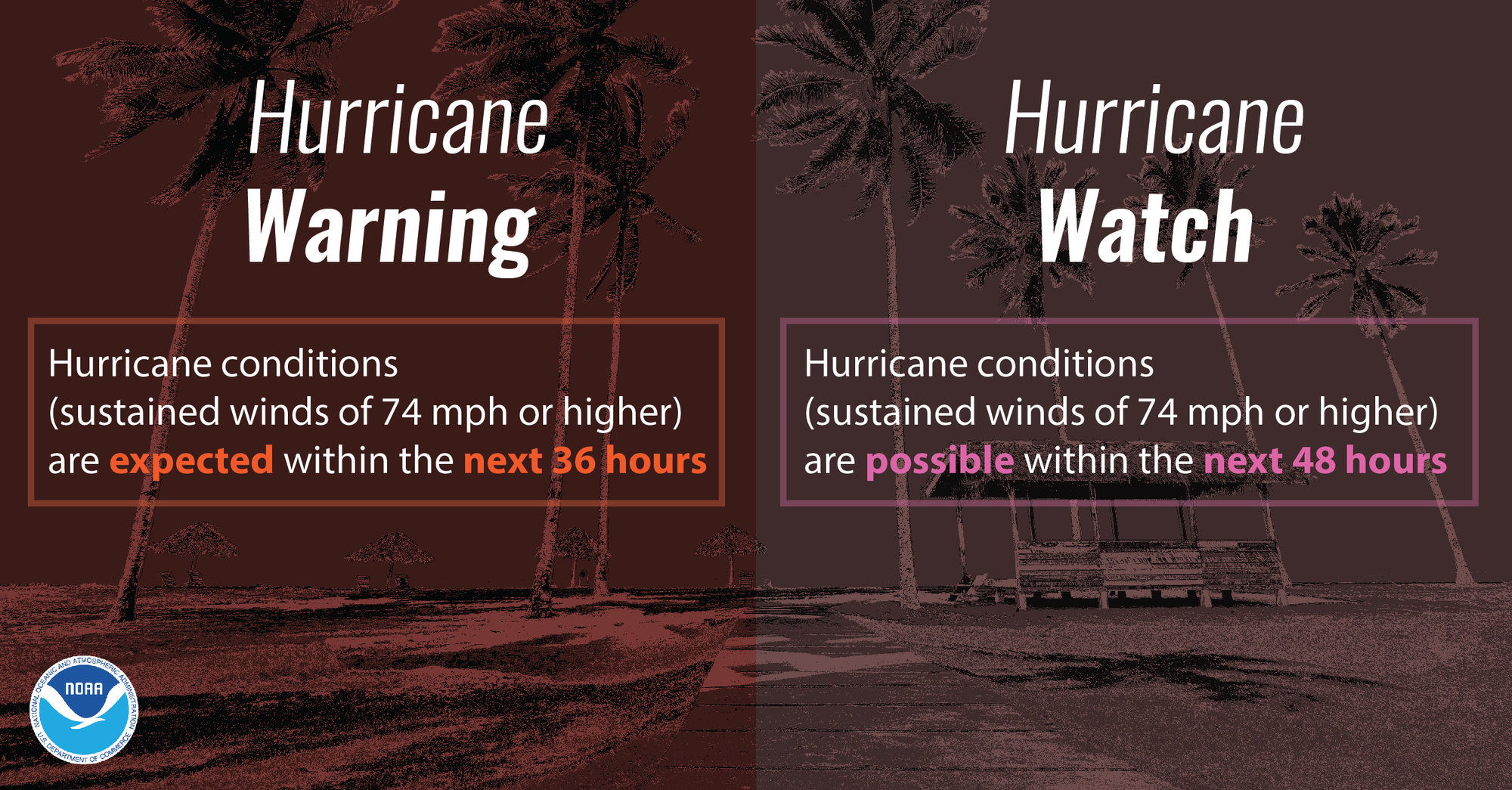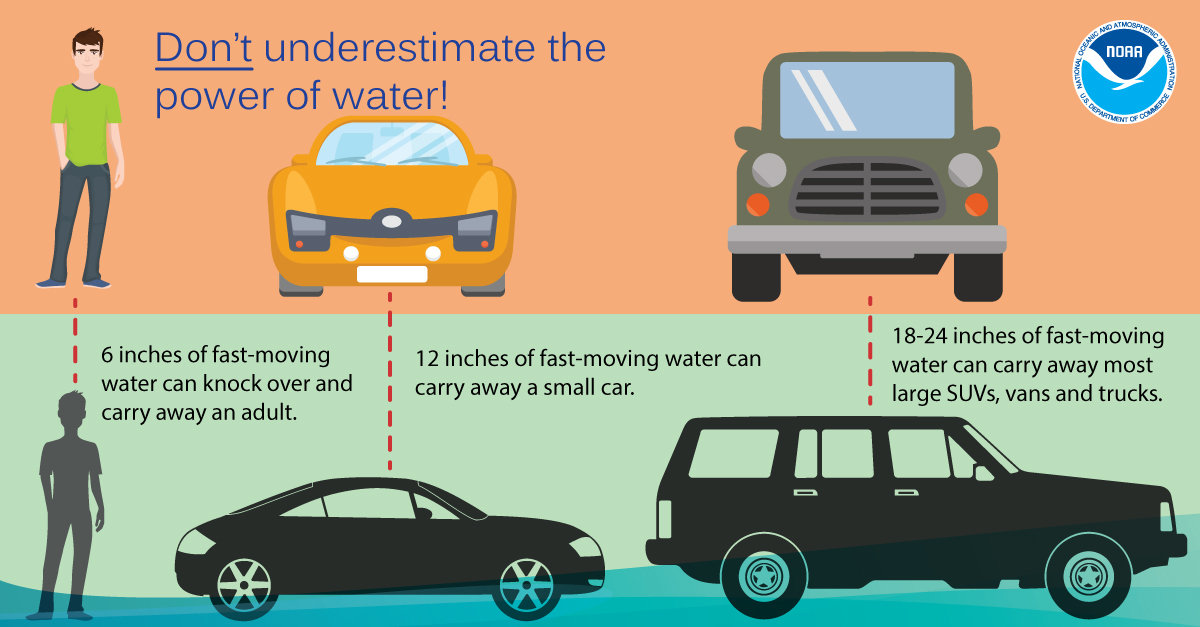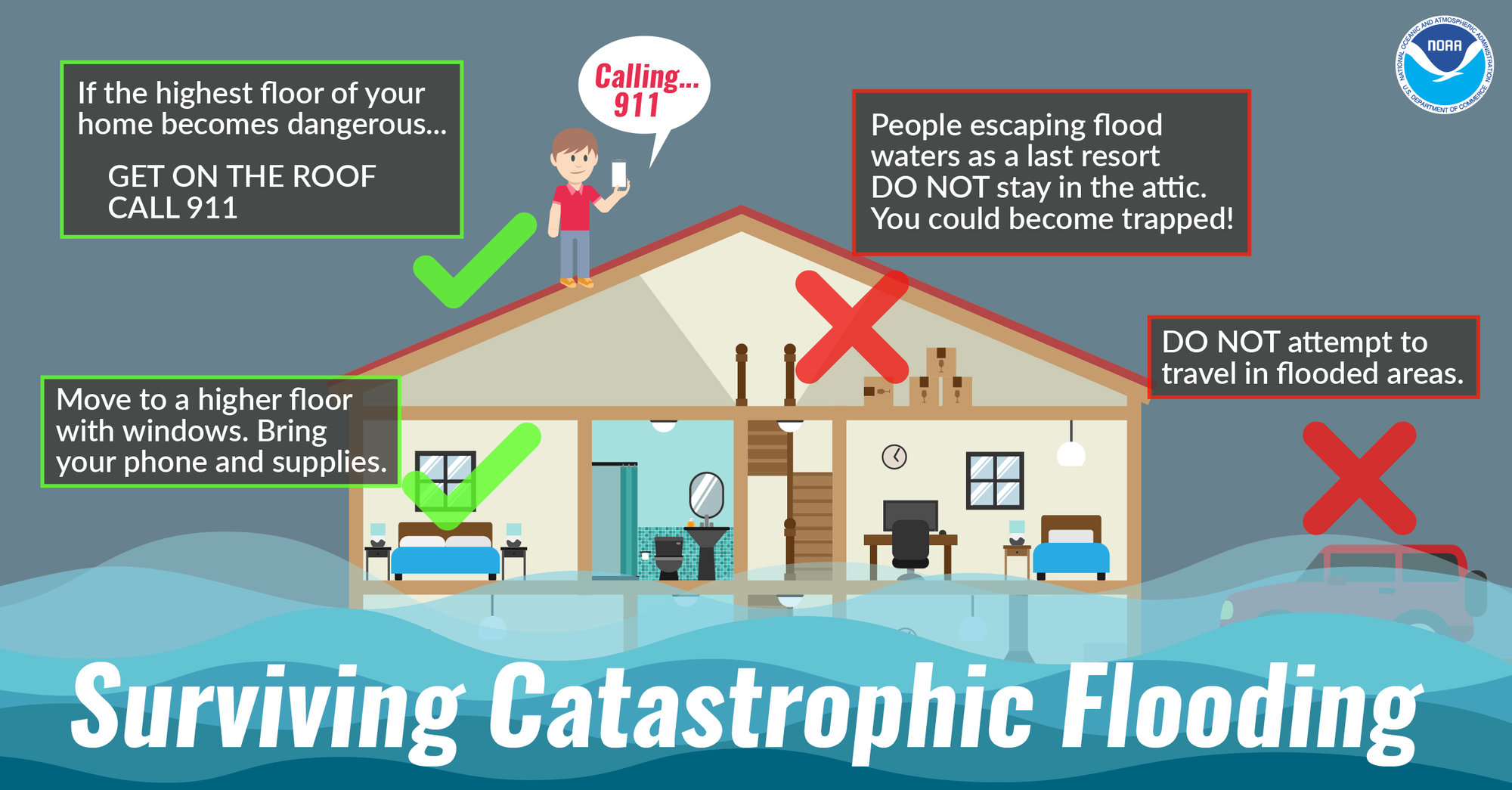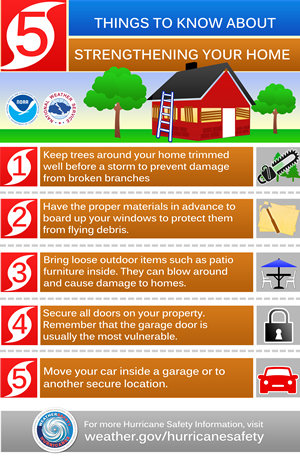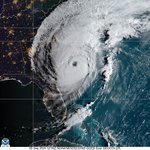As storm rains on Caribbean, take time to get ready for potential hurricanes
kayla@theitem.com
South Carolina was impacted by tropical weather before the official June 1 start to the Atlantic hurricane season, and with the year's ninth storm forecasted to be named this week as it heads toward Puerto Rico and the Caribbean, preparation can never come too early.
The U.S. National Weather Service is predicting a weather system that brought heavy rains to the eastern Caribbean Wednesday to continue on a northwestern path that could strengthen it to a tropical storm and take it to the U.S. mainland by the weekend.
There remains a lot of uncertainty on where it will go and what it will do, and while what may become Tropical Storm Isaias may not come close to threatening South Carolina, officials urge Americans annually to prepare for a storm before it hits.
There can be a lot to think about in these preparations, but state agencies have created campaigns to help sort through the information and provide actionable tidbits you can use today. The National Weather Service and S.C. Emergency Management Division provided a daily checklist of advice to take now to help prevent as much as we're able to when a hurricane threatens our area.
This information has been curated to what people inland most need to know. Impacts and preparedness for dangers like storm surge applies more to coastal regions, though it is still important to know.
SUNDAY - DETERMINE YOUR RISK
Coastlines are not the only places impacted by hurricanes. They can bring flooding due to heavy rainfall, especially along lakes and waterways, tornadoes and damaging wind. According to the National Weather Service, South Carolina is one of the most hurricane-ravaged states in the country.
Why should I not focus on the category alone?
The Saffir-Simpson Scale, which determines what category a storm is on a 1-5 scale, with 5 being the worst, uses wind only to estimate potential damage. It does not tell you how much rain may fall or high the storm surge may be on the coast. It doesn't tell you about tornadoes, how large the storm is or about its potential path.
MONDAY - DEVELOP AN EVACUATION PLAN
Find out if you live in a storm surge hurricane evacuation zone or if you're in a home that would be unsafe during a hurricane. If you are, figure out where you'd go and how you'd get there if told to evacuate.
You do not need to travel hundreds of miles. Identify a friend or relative who doesn't live in a zone or unsafe home and work it out with them to use their home as your evacuation destination. If possible, have multiple options and be sure to account for your pets.
TUESDAY - ASSEMBLE DISASTER SUPPLIES
You need to have supplies not just to get through the storm by for the aftermath. Have enough non-perishable food items, water and medicine to last each person in your house at least one week. Electricity and water could be out for at least that long.
Make sure you have extra cash, a 30-day supply of medicine, a battery-powered radio and flashlights. Many us of have cell phones, but they all run on batteries. Make sure you have a portable, crank or solar-powered USB charger. Fill up your car or a gas can before the storm. If the power goes out, you won't be able to get gas.
To learn more about what to include in your disaster supply kit, visit http://flash.org.
WEDNESDAY - GET AN INSURANCE CHECKUP
Call your insurance company or agency and ask for an insurance checkup to make sure you have enough homeowners insurance to repair or even replace your home. Don't forget coverage for your car or boat.
- Remember: standard homeowners insurance doesn't cover flooding. You need a separate policy for it, and it's available through your company, agent or the National Flood Insurance Program at www.floodsmart.gov.
Flood insurance requires a 30-day waiting period.
Know where your insurance documents and contact information are located, and make sure to pack them in your evacuation items if you have to leave.
THURSDAY - STRENGTHEN YOUR HOME
If you plan to ride out the storm in your home, make sure it is in good repair and up to local hurricane building code specifications. Many of these retrofits do not cost much or take as long to do as you may think. Have the proper plywood, steel or aluminum panels to board up the windows and doors. The garage door is the most vulnerable part of the home, so it must be able to withstand the winds.
Here are some tips
- Keep trees around hour home trimmed well before a storm to prevent damage from broken branches.
- Shop now for tested and approved window coverings to put up when a hurricane approaches.
- Bring loose outdoor items, such as patio furniture, inside. They can blow around and cause damage to homes.
- Secure all doors on your property.
- Move your car inside a garage or to another secure location.
FRIDAY - HELP YOUR NEIGHBOR
Many people, especially senior citizens, rely on the assistance of neighbors before and after hurricanes. 46% of individuals expect to rely a great deal on people in their neighborhood for assistance within the first 72 hours after a disaster.
The basic steps for helping your neighbor are easy:
- Help your neighbors collect the supplies they'll need before the storm.
- As storms approach, assist them with evacuation orders if ordered to do so.
- After the storm is over, be sure to check on your neighbors after its safe for you to head outside.
SATURDAY - COMPLETE A WRITTEN PLAN
The time to prepare for a hurricane is before the season begins when you have the time and are not under pressure. Take the time now to write down your hurricane plan. Know where you will ride out the storm and get your supplies. You don't want to be standing in long lines when a hurricane warning is issued. Those supplies that you need may be sold out by the time you reach the front of the line. Being prepared before a hurricane threatens makes you resilient to the hurricane impacts of wind and water.
Here are some things to know:
- Writing down your plan will ensure you don't make mistakes when faced with an emergency.
- Document all your valuables and possessions with a camera or video camera before the storm.
- Gather all vital documents, like passports and medical records, and put them somewhere that you can quickly access.
- Make planning and preparedness a family affair to ensure everyone knows what to do.
- Don't forget to include your pets in your plan.
- Every plan should include gathering non-perishable emergency supplies and assembling a disaster supply kit.
- Share your plan with others in your family and have an out-of-state friend as a family contact who knows your plan and where you will go during a disaster so all your family members have a single point of contact.
HURRICANE PREPAREDNESS AND RESPONSE DURING COVID-19
Amid a pandemic caused by the highly contagious respiratory coronavirus COVID-19, taking extra time to prepare is critical to ensure safety from both storm and virus.
Preparing for the season
- Give yourself more time than usual to prepare your emergency food, water and medicine supplies. The CDC says home delivery is the safest option, but it may not be available for everyone.
- Take steps to protect against the virus while running essential errands, including limiting in-person contact when picking up prescriptions by using drive-through windows, calling ahead or signing up for mail order delivery.
- When you check on neighbors and friends, maintain social distancing.
Preparing to evacuate
- Include COVID-19 protection items in your emergency kits, such as hand sanitizer with at least 60% alcohol, bar or liquid soap, disinfectant wipes and two cloth face coverings for each person over the age of 2.
- Find out if your local shelter is open. The location may be different this year due to the pandemic.
- If you have to travel to a shelter, follow COVID-19 safety precautions when traveling and at a shelter.
Staying at a public shelter
- Practice social distancing. Stay at least 6 feet from other people outside of your household.
- Follow CDC COVID-19 preventive actions - wash your hands often, cover coughs and sneezes, and follow shelter policies for wearing cloth face coverings. Avoid sharing food and drink with anyone if possible.
- Avoid touching high-touch surfaces, such as handrails, as much as possible. Wash hands with soap and water for at least 20 seconds or use hand sanitizer immediately after you touch these surfaces.
- Keep your living area in the shelter clean and disinfect frequently-touched items such as toys, cellphones and other electronics.
- If you feel sick when you arrive at the shelter or start to feel sick while sheltering, tell shelter staff immediately.
Help your children stay safe while in a public shelter
- Teach and reinforce everyday preventive actions for keeping children healthy.
- Make sure children aged 2 and older wear cloth face coverings. Face covers should not be used by children under the age of 2 or those who have trouble breathing, or who are unconscious, incapacitated or unable to remove the mask without assistance.
- Be a good role model - if you wash your hands often, your children are more likely to do the same.
- Help your children stay at least 6 feet away from anyone who is not in your household.
- Watch your child for any signs of illness and tell shelter staff if your child may be ill.
- Try to deal with the disaster calmly and confidently, as this can provide the best support for your children. Help children cope with emergencies.
Staying with friends and family
- Talk to the people you plan to stay with about how you can all best protect yourselves and maintain space.
- Consider if either household has someone who is at a higher risk of developing severe illness from the virus, including older adults or people of any age who have underlying health conditions.
- Follow everyday preventative actions, such as covering coughs and sneezes, washing hands often and avoiding touching your eye, nose and mouth with unwashed hands. Consider wearing masks in close quarters.
HOW TO PREPARE FOR HIGH WINDS AND AVOID THE DANGERS OF FLOODING
Even tropical storm-force winds (39-73 mph) are capable of tossing around debris. Seek shelter from the wind in a sturdy building before the winds arrive. Tropical storm-force winds usually strike hours ahead of the hurricane's eye, which is the center. Hurricane-force winds can easily destroy poorly constructed buildings and mobile homes. Debris such as signs, roofing materials and items left outside become flying missiles in high wind. Falling trees can cause damage.
What to do before the wind starts
Secure loose items from outside before the wind starts.
Trim trees and repair loose siding and shutters.
What to do during high winds
During high winds, avoid exterior facing rooms.
Don't take refuge in your car or in a camper. Campsites are often full of trees.
Inland flooding
Flooding is the most deadly threat hurricanes bring to inland areas of South Carolina and Georgia. Most hurricane deaths over the past 30 years have been the result of flooding, many of which have occurred in vehicles as people attempt to drive through flooded areas where water covers the road.
The amount of rain a storm produces is not related to the intensity of the wind, therefore the category. Weak hurricanes and even tropical storms have caused disastrous floods throughout history. Hurricane Joaquin in 2015 moved far to the east of the U.S., but a non-tropical low over the Southeast tapped into the hurricane's moisture, causing the historic 1,000-year flood that greatly impacted the area.
What can you do?
Determine if you live in an area at risk of flooding. If your yard or nearby roads around your home flood during ordinary thunderstorms, then you are at serious risk of flooding from torrential tropical rainfall. Those living near creeks, streams and drainage ditches should also closely watch water levels. During extreme events, even those areas that normally do not flood are at risk.
Stay aware of road conditions, and make sure your escape route is not flooded. Never attempt to cross flowing water; instead, "turn around, don't drown." The reason that so many people drown during flooding is because few of them realize the incredible power of water. A mere 6 inches of fast-moving flood water can knock over an adult. It takes only 2 feet of rushing water to carry away most vehicles. This includes pickups and SUVs. Never allow children to play near streams, creeks or drainage ditches. As rainwater runs off, streams, creeks and ditches fill with running water that can easily sweep a child away.
Tornadoes
Tropical tornadoes are often short-lived, but they can produce enhanced areas of damage. Sometimes, these tornadoes can occur in the outer rain bands well ahead of the center of the storm.
Have multiple ways to receive warnings so you can seek shelter quickly if a warning is issued for your area.
Information gathered from the National Weather Service, FEMA and CDC.
More Articles to Read



